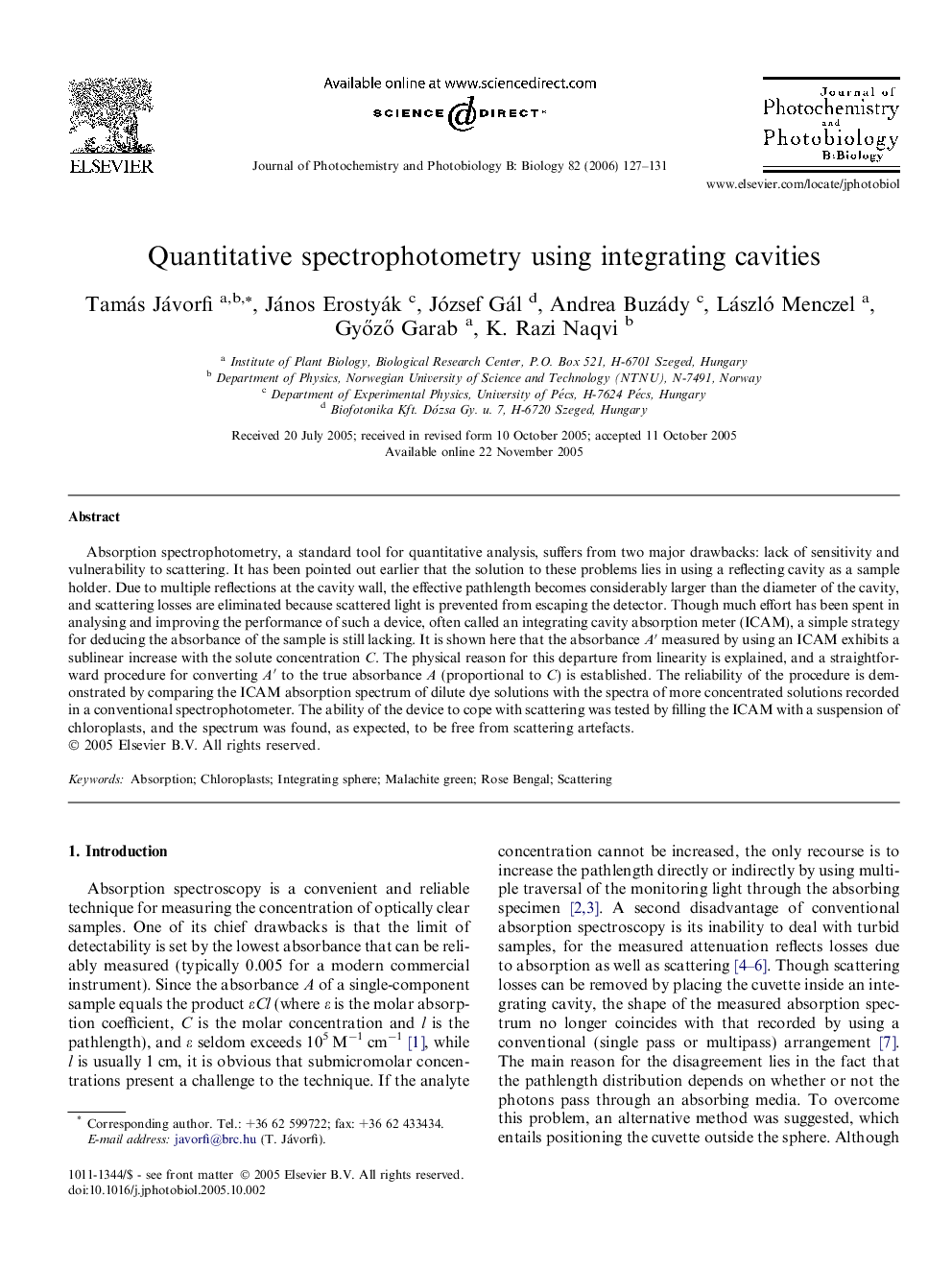| Article ID | Journal | Published Year | Pages | File Type |
|---|---|---|---|---|
| 31244 | Journal of Photochemistry and Photobiology B: Biology | 2006 | 5 Pages |
Absorption spectrophotometry, a standard tool for quantitative analysis, suffers from two major drawbacks: lack of sensitivity and vulnerability to scattering. It has been pointed out earlier that the solution to these problems lies in using a reflecting cavity as a sample holder. Due to multiple reflections at the cavity wall, the effective pathlength becomes considerably larger than the diameter of the cavity, and scattering losses are eliminated because scattered light is prevented from escaping the detector. Though much effort has been spent in analysing and improving the performance of such a device, often called an integrating cavity absorption meter (ICAM), a simple strategy for deducing the absorbance of the sample is still lacking. It is shown here that the absorbance A′ measured by using an ICAM exhibits a sublinear increase with the solute concentration C. The physical reason for this departure from linearity is explained, and a straightforward procedure for converting A′ to the true absorbance A (proportional to C) is established. The reliability of the procedure is demonstrated by comparing the ICAM absorption spectrum of dilute dye solutions with the spectra of more concentrated solutions recorded in a conventional spectrophotometer. The ability of the device to cope with scattering was tested by filling the ICAM with a suspension of chloroplasts, and the spectrum was found, as expected, to be free from scattering artefacts.
